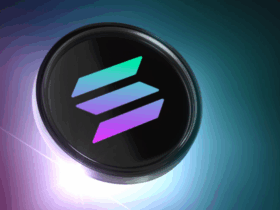In this article, I will outline some of the Best Stablecoin Interest Rates out there, from centralized players like Nexo, YouHodler, and Crypto.com to decentralized ones like Aave, Curve Finance, and Pendle.
By comparing their APYs, interest payment frequencies, and APY volatility, I will enable you to identify the most profitable and secure method to earn interest on your stablecoin.
Key Points & Best Stablecoin Interest Rates
| Platform | Stablecoin | Base APY | Max APY | Notes |
|---|---|---|---|---|
| Nexo | DAI | 8.00% | 14.00% | Same conditions as above |
| Aave | USDC | ~5.00% | Varies | Best for risk-adjusted DeFi yields |
| Curve Finance | USDT | ~4.50% | Varies | Leading platform for stablecoin liquidity pools |
| Pendle | USDC | ~6.00% | >30.00% | Tokenized yield strategies with time-lock options |
| Convex Finance | USDT | ~5.00% | Varies | Optimizes Curve liquidity for higher returns |
| Morpho Blue | USDC | ~4.80% | Varies | Efficient lending protocol with dynamic rates |
| YouHodler | USDT | 10.00% | 12.00% | CeFi platform with flexible terms |
| CoinLoan | USDC | 8.00% | 10.00% | Regulated lending platform |
| Binance Earn | USDT | ~5.00% | 7.00% | Flexible and locked savings options |
| Crypto.com | USDC | ~6.00% | 8.50% | Higher rates with CRO token staking |
10 Best Stablecoin Interest Rates
1. Nexo
Nexo is among the best CeFi platforms out there, providing return rates of up to 16% APY on interest, payable daily, for stablecoins such as USDT, USDC, and DAI.
This offer is available for customers who lock their coins for three months and keep a significant number of NEXO tokens.

Customers can pick interest payouts in NEXO for higher rates or in stablecoins. Nexo also provides lower yields for clients who want to maintain some liquidity in their accounts.
Nexo is popular in the industry for passive income clients because of its intuitive platform, insurance-backed custodial services, and excellent customer service, especially for those who want to operate in a compliant and safe environment.
Pros And Cons of Nexo
Pros:
- Attractive interest rates of 15% per year.
- Flexible Savings with interest credited daily.
- Crypto-backed loans and Nexo card integration.
- Strong user and account security.
Cons:
- Interest rates are dependent on staking.
- Lesser-known stablecoin support is limited.
- Possible regulatory risks with centralization.
- Fixed-term investment plans.
2. Aave
Aave is a decentralized lending protocol where users can earn interest by supplying USDC, USDT, DAI, and other stablecoins to liquidity pools.
As a protocol within the Ethereum money market, Aave offers interest varying quarterly, predominantly within the scope of 3% to 6% APY.
Aave is characterized by strong security, the first to achieve a certified auditing for DeFi lending, novel functionalities such as flash loans, dynamic borrowing rate features, and governance transparency.

Non-custodial wallets, keeping complete control of the issued and stream Liquidity ascertains Aave for DeFi.
Aave protocol also offers collateralized borrowing— a seamless, decentralized, permissionless system where users leverage their positions while earning yield on their holdings.
Pros And Cons of Aave
Pros:
- Trustless and Decentralized lending.
- Multi-chain support and Layer 2 solutions.
- Interest rates are variable and adaptive.
- Community governance and transparency.
Cons:
- Some user environment volatility with variable APYs.
- Potentially high Layer 2 Axum gas fees.
- DeFi ecosystem navigation requires experience.
- Smart contracts are always risky.
3. Curve Finance
Curve Finance focuses on automated market makers and specifically on stablecoin swaps and liquidity provision.
Curve users earn interest by providing liquidity to stablecoin pools like USDT/USDC/DAI, with APYs of about 4%–6%.
Curve’s effective trading and low slippage, of which stablecoin traders value, enable Curve users to make profit on their funds.

When used with Convex Finance, which enhances Curve reward optimization, returns become significantly greater.
Curve operates without any centralized entity and is governed completely by the democracy of CRV token holders.
It is primarily for users who understand DeFi frameworks and seek to earn consistent, low-risk returns.
Pros And Cons Curve Finance
Pros:
- State of the art in Liquidity for stables.
- Fee and CRV earnings for liquidity.
- Various stablecoin pools.
- Decentralized and permissionless.
Cons:
- APYs are inconsistent and unpredictable.
- Impermanent loss on stablecoin pools is risky.
- A beginner-focused user experience is needed.
- Rewards primarily in CRV tokens, which are prone to fluctuations.
4. Pendle
Pendle is one of the DeFi protocols that allows you to trade and lock interest rate on stablecoin for future yields.
It allows you to perform creative yield strategies with an annually percentage yield (APY) between 6 and over 30, which depend on market conditions and lock periods.

The users can segment their assets into principal and yield tokens, which allows users to flexible yield farming and hedging. It is designed for professional experienced users.
Its platform has a remarkable user interface, which has Lido and Aave protocols integration. Pendle is rapidly growing due to its unique yield-optimizing strategy.
Pros And Cons of Pendle
Pros:
- Tokenizes yield-bearing assets for more flexible strategies.
- Trade separately Principal Tokens (PT) and Yield Tokens (YT).
- Hedging and speculative strategies on yield are possible.
- Innovative approach in DeFi for earning stablecoin.
Cons:
- Performance of the underlying asset dictates the rates.
- The new user learning curve is quite steep.
- A smaller user base means potentially lower liquidity.
- Risk in DeFi and smart contracts.
5. Convex Finance
Convex Finance builds on Curve Finance, which results in enhanced yield opportunities by aggregating and optimizing CRV rewards. Users earn boosted APYs above 5% by deposit stablecoins into Curve pools through Convex.
Convex auto-compounding rewards and simplified staking attempts with no user action increase the earn rate, increasing the value proposition. Convex also provides governance rewards in the form of CVX tokens.

Convex Finance will best serve users who already know Curve and are willing to earn passive income by providing liquidity.
In DeFi, the tool Convex provides yield stacking, along with integration with Curve provides a powerful tool.
Pros And Cons of Convex Finance
Pros:
- Boosts yield farming profits on Curve Finance.
- Easy LP token staking for additional profits.
- Efficiently consolidates disparate reward flows.
- Governance initiatives via CVX are community-led.
Cons:
- Targeting only Curve LP token holders, lacking stablecoin deposits.
- Most rewards are CVX tokens, which are volatile.
- Smart contract and DeFi risks are real.
- For those uninformed about Curve/LP staking, it is intricate.
6. Morpho Blue
Morpho Blue takes the next step in optimizing defl lending protocols while bringing increased efficiency and yield.
The protocol offers variable interest rates on stablecoins, notably on USDC, and averages an APY of ~4.5% – 6%.
Directly matching lenders and borrowers and eliminating inefficiencies tied to returns and surpassing traditional models of lending is a game-changer.

This next step in optimizing returns and efficiency seamlessly integrates built on top Aave and Compound.
With built-in risk parameters and value lending, high-performance lending in the braided architecture is unlike any other in the decentralized space.
Furthermore, with the ability to design custom lending markets, the protocol is innovative and flexible, geared towards stablecoin users.
Pros And Cons of Morpho Blue
Pros:
- Liquidity aggregation to deliver better yields.
- Peer-to-peer lending protocol that is decentralized.
- Compatible with various stablecoins.
- Protocol is open source and transparent.
Cons:
- Interest rates are fixed and volatile in the open market.
- As a smaller platform, liquidity will be less than top DeFi protocols.
- In DeFi, you must protect live assets and have the knowledge to do it.
- The risk posed by smart contracts persists.
7. YouHodler
YouHodler is a CeFi platform that offers USDT and USDC stablecoins with attractive interest rates that yield up to 12% APY.
These stablecoins can be converted to and from other crypto and fiat currencies. It also offers crypto-backed loans and other features like leveraged yields with Turbocharge and crypto-backed loans.

YouHodler is regulated in both Switzerland and Cyprus, which guarantees a secure ecosystem to earn passive income.
Interest is paid weekly, and portfolio management is possible through a mobile app. YouHodler is best for clients who want to maximize their returns with trusted and reliable centralization in a platform.
Pros And Cons YouHodler
Pros:
- Stablecoins attract interest rates of as high as 15%.
- There are saving options, both flexible as well as fixed.
- YouHodler lends against tokens and offers multi-currency wallets.
- Active clientele gets interest paid out every week.
Cons:
- YouHodler, and indeed any crypto company, can become the subject of regulations.
- Compared to DeFi, there are fewer stablecoins to work with.
- YouHodler has fixed-term deposits, and these lead to stagnant cash.
- YouHodler can lower interest rates whenever it wants.
8. CoinLoan
CoinLoan is a licensed, regulatory-compliant CeFi platform offering interest on USDC, USDT, and DAI stablecoins up to 10% APY.
They provide flexible deposit options fixed for different time lengths. “Higher APYs “for” longer time commitments “sign “CoinLoan” crypto-backed loans to” withdrawals, “making” CoinLoan “a” versatile financial tool.

CoinLoan is a licensed, regulatory-compliant Estonian CeFi platform. “CoinLoan” “uses” fine regulatory compliance to PAYG. “G” compliance PAYG.
The compliance is PAYG monthly, “and” CoinLoan “G” compliance regulatory Cl. For regulatory “G” compliant stable income on CeFi, passive compliance is PAYG monthly. CoinLoan is best “for” user “G” compliance,e regulatory oversight passive income.
Pros And Cons of CoinLoan
Pros:
- CoinLoan offers an annual interest of 9.2% on stablecoins.
- There are flexible and fixed-term options to choose from.
- CoinLoan also allows additional earnings by staking CLT tokens.
- CoinLoan staking platform gets beginners and advanced users alike.
Cons:
- You will earn less in DeFi compared to CoinLoan on stablecoins.
- CoinLoan has stablecoins and tokens, but also has a limited selection of stablecoins.
- You are the number one interest rate policy risk on platforms.
9. Binance Earn
Binance Earn generates passive income within the Binance ecosystem to manage investments and trade seamlessly.
Flexible and locked savings offer stablecoin interest rates. Passively earning percentages of USDT and USDC usually falls within the flexible savings account between 3% and 7% APY and provides higher returns for longer lock-in periods.

Binance Earn also offers USDC and USDT staking and dual investments for higher returns. Binance Earn is perfect for users who want to earn interest while staying on Binance. Its simplicity, liquidity, and security also make it beginner-friendly.
Pros And Cons of Binance Earn
Pros:
- There are many flexible and fixed-term options.
- Binance’s own ecosystem incorporates the product.
- There are many stablecoins and other cryptocurrencies.
- The platform has a good reputation.
Cons:
- Interest rates differ based on product type and demand.
- Regulatory issues are posed with a centralized system.
- Locked deposits reduce liquidity.
- Some products offer little to no value for users.
10. Crypto.com
Crypto.com Earn program provides attractive interest rates on stablecoins, with rates for USDC and USDT standing at 8.5% APY.
These interest rates are subject to change depending on lock durations and CRO token staking.
Interest rates are tiered based on whether users choose flexible, 1-month, or 3-month terms, with longer commitment interest rates and CRO loyalty.

In addition, interest is paid weekly and the platform has multiple coins to choose from. Besides the DeFi wallet, they also provide a Visa card, NFT marketplace, etc.
For users whose mobile support is key, they best suit those who want to earn, spend, and invest from the same platform, which has high mobile support.
Pros And Cons of Crypto.com
Pros:
- The Crypto.com Earn program offers competitive rates.
- Options that are flexible and fixed-term with tiered rewards.
- Access to CRO staking and crypto-linked debit cards.
- A secure and easy-to-use mobile app.
Cons:
- Rates are dependent on term length and CRO staking.
- Regulation may result in relicensed centralized platform risk.
- Loyalty tiers are required for maximum yield.
- Lesser-known stablecoins may have lower APY.
Conclsuion
To conclude, the best stablecoin interest rate providers are Nexo, YouHodler, and Crypto.com, which offer high yields with flexible and fixed-term options.
While DeFi protocols Aave, Curve, and Pendle offer innovative and decentralized ways to earn. Which platform to use really depends on your risk tolerance.
The APY you’re aiming for, and whether you prefer a centralized or a decentralized option. With proper research, you will ensure the best growth on your stablecoins.
FAQ
Interest earned by holding stablecoins on platforms, usually paid as APY.
Nexo, YouHodler, Crypto.com, Aave, Curve Finance, Pendle, Binance Earn.
Depends on the platform: centralized platforms usually offer fixed/flexible, DeFi platforms often have variable rates.
Flexible savings allow instant withdrawal; fixed-term deposits require a lock-up period.
Yes, risks include platform solvency, regulatory issues, and smart contract vulnerabilities in DeFi.














Got a Questions?
Find us on Socials or Contact us and we’ll get back to you as soon as possible.